Review: Open Labs NeKo XXL Gen5 DAW Keyboard Workstation
REVIEW: I’m a big fan of Open Labs’ music workstation instruments, so I was pretty excited when they announced the rebirth of their XXL model this spring, which was not available last October 2008 when I bought the NeKo TSE (previously reviewed for this magazine). The XXL is not technically their flagship, if you ask anybody at Open Labs (OL) about that; it’s a special-purpose version of their NeKo designed for those with more professional needs. This means, specifically, it has all their control surface options (except the DJ panel), and most importantly it has faster multi-core Intel processors, more audio I/O, and hardware word clock I/O. Since the audio hardware is based on the M-Audio Delta 1010 series, it is “ready to rock” with Pro Tools 8 MA Edition, out of the box. It also comes outfitted with four 1TB hard drives (think system drive, audio drive, sample drive, back-up drive), and all the rest of their fifth generation software package.
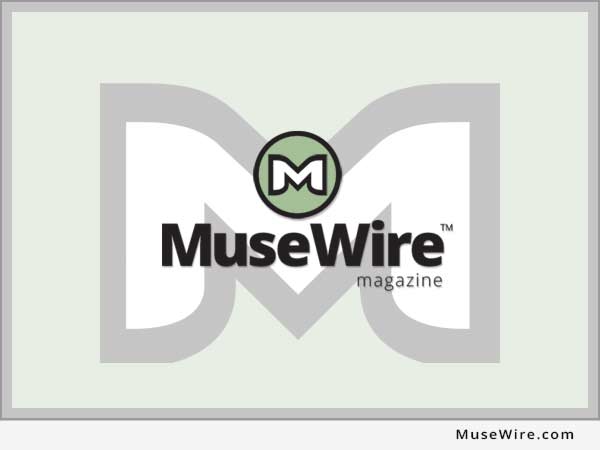 The first thing I found when taking it out of the box is that they still pack the unit very well with the spongy type of foam, not the brittle stuff that breaks into dust when you try to take the item out of the box; this means it absorbs shock better, and can be re-used in the future. So, it’s very well packed to arrive safe and sound, and to protect the LCD touch panel.
The first thing I found when taking it out of the box is that they still pack the unit very well with the spongy type of foam, not the brittle stuff that breaks into dust when you try to take the item out of the box; this means it absorbs shock better, and can be re-used in the future. So, it’s very well packed to arrive safe and sound, and to protect the LCD touch panel.
OL is still a bit stingy on the documentation, but I will address that in my minor quibbles a bit later on.
Ins and Outs
The short run-down of the hardware specs of the XXL are:
AUDIO: (1) High performance audio I/O card with low latency including 24-bit/96kHz professional 10-in/10-out: (2) mic/instrument preamp inputs (with phantom power 48V), (8) analog line inputs, (10) analog line outputs, S/PDIF digital I/O (coaxial), (1) Word Clock I/O, (1) headphone jack with volume control. MIDI in and out. Sustain and expression pedal inputs.
SYSTEM: Windows XP SP3. 2.8 GHz Core2 Quad Intel processor. 4GB RAM. One dual-layer DVD-RW (SATA) drive. Four 1TB Western Digital SE16 SATA (3GB/sec) drives. DVI video port. 15-inch touch screen. Four USB 2.0 ports (2 internal, 2 external). One FireWire 400 port. One Gigabit Ethernet port.
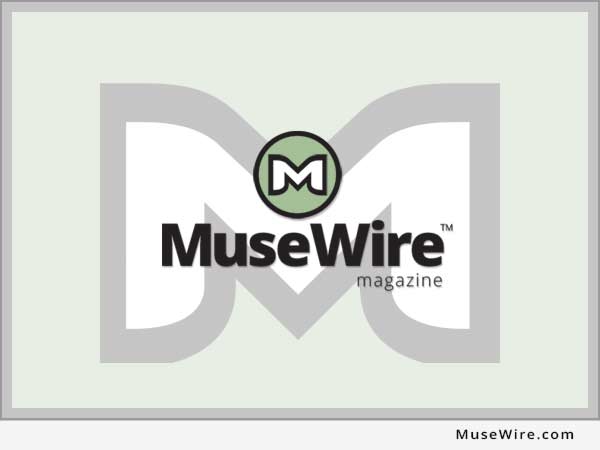
Control This
What sets the XXL apart from the other Gen5 (fifth generation) OL keyboards, is the extra panels, which means it has the new Bump MP drum panel, the mixer panel with display, a QWERTY keyboard (useful for shortcuts in most recording applications), and the new Alpha II Panel which has a wide LCD display (scribble strip, if you prefer) with assignable buttons and encoders. Missing from the XXL, but found on other Gen5 models is the DJ panel, which appears to be missing here due to lack of internal space because of extra cards and cooling.
(Note: on their Web site, they refer to the Bump MP as “Bump MP,” then “BumpMP,” then “Bump-MP,” so I’m not entirely sure which is definitive.)
It’s all a bit to take in and get a grasp on (pun intended). The one thing which threw me at first, is that the dedicated keyboard transpose buttons found on the Gen4 NeKo instruments is no longer found on the XXL (thanks to different, better panels). On the non-XXL models, the DJ panel (fader, knobs, and buttons, below the touch panel) can take over this chore. With the XXL I discovered the only way to do this is to use the Alpha II Panel (top-right panel), and use the menu key to switch to the Reaper DAW preset, and then the up/down and reset transpose buttons work from that pre-set.
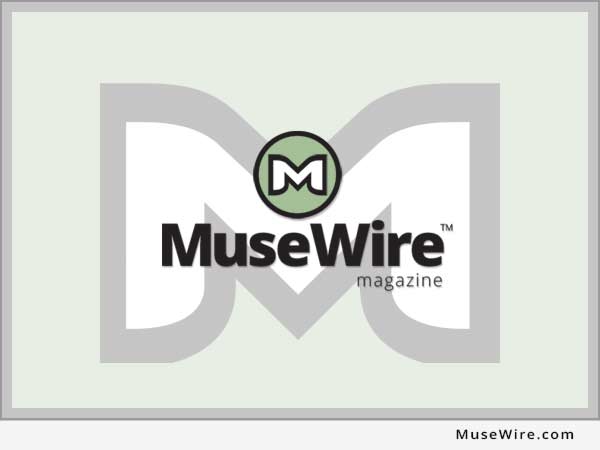 However, there is no standard pre-set on the Alpha II Panel for virtual instruments, which there should be. Of course, there are presets for bundled Reaper DAW, the bundled Ableton Live 7 DAW, and Riff. (To clarify: the default transpose buttons on the Alpha II Panel work while in Riff, which is the default environment for the XXL. It’s only when you leave the Riff environment, go to Windows, and launch a stand-alone application outside of Riff, where they do not.)
However, there is no standard pre-set on the Alpha II Panel for virtual instruments, which there should be. Of course, there are presets for bundled Reaper DAW, the bundled Ableton Live 7 DAW, and Riff. (To clarify: the default transpose buttons on the Alpha II Panel work while in Riff, which is the default environment for the XXL. It’s only when you leave the Riff environment, go to Windows, and launch a stand-alone application outside of Riff, where they do not.)
Since Ableton Live is a whole subject in itself, I’m not going to cover that product at all here, but suffice it to say that the XXL’s many controls are very well mapped to the Live environment so you can do some pretty amazing things with it.
Similarly Reaper is a wonderful DAW, which has some notable features for working with everything from one screen. It’s got a little bit of a different mindset than Cakewalk or Pro Tools, but if you want to do a lot of audio recording, it’s dead easy to learn, and OL have many great tutorials and – again – all of the Gen4 and Gen5 keyboards are pre-set to control Reaper elements.
The mixer panel (top-left of XXL), has 9 faders, with four banks; and 16 knobs, as well as an LCD display where 8 of the knobs have scribble strips that change based on the presets (meaning, you can create a pre-set for Sonar, or Pro Tools, if you wish). The system is pre-set to work with both Live and Repear, and Riff. The sliders have LEDs at top and bottom which get brighter depending on the position of the fader. The faders were designed to work with the MiKo layout, apparently, as the blue LEDs are to the left of the faders, so while seated at the XXL, they are not clearly visible when the faders are either close to bottom or top.
The Big Wow
Probably the most exciting thing to me about the XXL, personally, is that it is the first true (no B.S.) “all in one” recording product ever built, by anybody, period. Full stop. Right now, I can boot up the unit in under 100 seconds, and be running either Pro Tools LE (M-Audio edition), Cakewalk Sonar Producer Edition, any virtual instrument in stand-alone mode and – finally – Gigastudio. One of my (perhaps silly) dreams for many years was “Oh, I wish Tascam would build a keyboard instrument to run Gigastudio in standalone mode… just like my Triton Pro Extreme or Kurzweil. Sigh.” Well, folks, now I can. And, may I say, big freakin’ wow, baby. The OL XXL has GSIF2 drivers, so I can load up a whole passel of Giga sounds, and the updated GS4 interface actually works on the 15-inch touch panel.
(Ahem: of course, Gigastudio is now a defunct product, but those of us long-time users still like it. And, although I have also become a convert to Native Instruments’ Kontakt 3.5, it would take a year or more of my little free time to convert my vast legal sound libraries, and I’d lose many of my key-switching capabilities.)
With the touch panel, I really love virtual instruments with stand-alone modes, like the Arturia CS-80, where the on-screen ribbon controller responds to the touch panel! Some virtual keyboards, like Native Instruments’ Akoustic Piano, is made for a touch panel, since you can just tap the piano you want to load, and then the environment to play in. Very cool. Manipulating samples and elements in NI’s KORE 2 system is equally elegant by touch.
Rock and Riff
When launched, the XXL opens into the Riff environment, which is OL’s own custom live workspace environment. This is very cool, and shows that OL has really matured from repurposing other folks’ applications (like Karsyn, based on Forte) to building their own solutions. At first glance, it seems to be a fairly simple grid setup to create custom song-sets, each of which can contain instruments, FX, and routings. At second glance, it’s clear a lot of thought has gone into Riff in making it a very deep system for playing live, and for creating your own custom “instrument” for when you boot up the XXL.
For example, you can create custom buttons, dials, sliders and other controls to manage individual instruments, or groups, which can vary per song. Riff is perhaps the most powerful thing about all of the fifth generation OL instruments (Gen4 gear can be upgraded to the Gen5 software), and might be easily dismissed when jumping right to an installed DAW. It’s a little confusing in some ways relative to the prior starting point of Karsyn, as found on Gen4 OL products, but once you play with it a bit (or use the live training support option included), it really starts to get under your skin of how cool it really is.
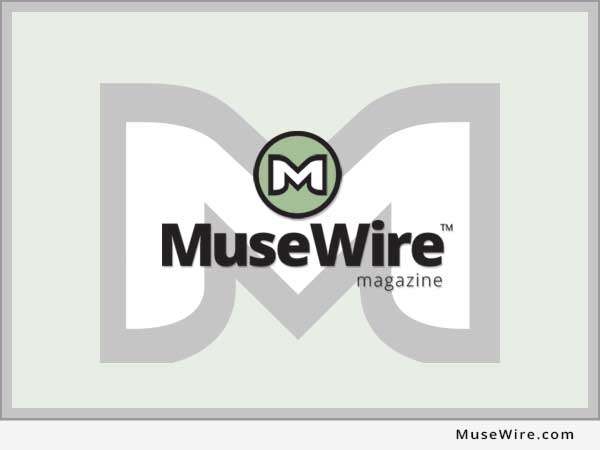
As one example, you could create a song grid, with all your songs by name and color code on the touch panel, and you could group different buttons around a core song. So, in the context of a single performance you could easily jump between groups of instruments, splits, effects chains, patches, mixes and so forth with one button. Further, you can create custom controls for each set-up, like on screen toggles, sliders, dials and whatnot, so if you want to just control the filter on your bass line, you can do it by adding just the single element you want to see/control on your screen. I didn’t see a couple of things on first or second glance, but I’m hoping they add a joystick type x-y controller and side-to-side virtual ribbon controller type element, as these are superb control surface options for virtual instruments.
Initially I found the default set-ups a little disappointing relative to Karsyn on the TSE, because very few of the bundled instruments showed up in the drop-down menus for Riff; for example, Truepianos is included, but didn’t show up in the menu for “keyboards.” So, there are no default Riff set-ups with Truepianos. After I had installed Native Instruments Komplete 5, I went into the “add” menu, and found I could drag any of the installed instruments into the categories, or make new categories. Now my “keyboards” drop-down menu has Truepianos, and the Native Instrument keyboards and B4. Now if I want to make a new song setup, they are right there.
Because this is still fairly new (version 1.2 of Riff literally came out days before my unit shipped, and the tutorial videos on YouTube still show the earlier version), OL hasn’t yet had time to build out the amazing instrument set-ups that came with the TSE workstations. So, most of the set-ups are built around just a very few of the bundled on-board instruments and sounds, and you can no longer launch them from the OL GUI, where previously the GUI would launch special set-ups of Karsyn and E-MU’s Proteus X2.
Luckily Karsyn is still included (for now), which is still kind of easier to use for just launching a newly installed VST, since it has a nice menu of “newly installed instruments.” So, you don’t need to make a song, or edit one, you just click load, and it’s playable. OL will be discontinuing Karsyn at some point in favor of Riff, but for the transition, it’s nice to have. In speaking to one of the OL support folk, it sounds like there are some really wicked things planned for Riff, and for a nascent application it has some truly inventive ideas.
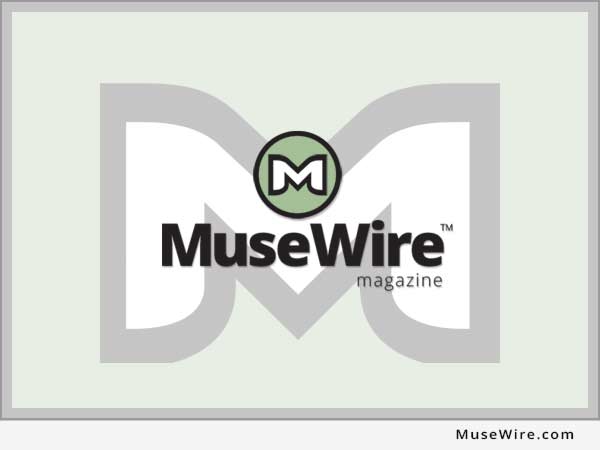
Sounds on Board
On the subject of sounds on board, I was more than a little surprised to no longer find any version of E-MU Proteus X2, even the free Proteus VX. I’m not sure if OL had a falling out with E-MU, or perhaps E-MU chose to discontinue licensing the X2 software now that X3 has come out. Luckily, I already owned a legal copy of Emulator X2, and upgraded to X3 which doesn’t require a dongle anymore, so with X3 loaded and all the libraries I had purchased for X2 (classic keyboards), I now have the same sound sets from the TSE, minus the Ensoniq ASR-10 sets. For anybody migrating as I am from the TSE to the XXL, you will want to go buy the Proteus or Emulator X3 from EMU, or at least download the free Proteus VX, so you won’t be going “hey, what happened to….”
OL does include several E-MU sound sets from Digital Sound Factory that work with the included Cakewalk Dimension LE, which are sounds from the venerable E-MU Proteus 2000, MoPhat and Virtuoso modules. However, these are fairly old school in quality (small number of samples per patch) versus today’s modern ROMplers or the some of E-MU’s extensively sampled vintage keyboard libraries.
Basically, Cakewalk’s Dimension LE is the new “standard” library playback engine on the OL Gen5 instruments, replacing E-MU’s Proteus X2. This, actually, is not a bad choice, since Dimension uses the same sfz format as Wusikstation (also included with OL products, as before), and the OL MimiK key cloning application. However, you will want to upgrade to the “Pro” version ($99-$149, depending on Cakewalk’s variable pricing on their instruments) for any key cloning efforts (cloning hardware or virtual synths), since Dimension LE doesn’t have all of the ADSR and editing tools needed to properly replicate many of the instruments you may wish to clone. Of course, if you are using Cakewalk Sonar, you may already have the Pro version.
Other bundled sounds/instruments include Lennar Digital Sylenth, which is one of the better analog sounding virtual instruments, and is ideal for those who want a wide range of arpeggiated patches (hint: try stopping the arpeggiator on the more interesting patches to just play them normally). Purity and Autogun are included along with the aforementioned 4Front Truepianos.
Boom Shaka Boom Boom
One of the very cool things in the sound department is the custom collaboration between OL and FXpansion, for a customized version of Guru, the drum machine slash drum sequencer. With the combination of the new OL “Bump MP” control surface and Guru, you have a very usable setup for those who may have grown up with a venerable Akai MPC. But, wait, there’s more!
One of the truly cool things about the Bump MP set-up, is that OL have added one unique thing to the otherwise standard 4×4 (16) drum pad layout, which is a “last played” button (a 17th pad). This lets you instantly play something like a hi-hat using two buttons, as the extra pad does whatever your last pad did. As someone who was first on the block with a Linn9000 back in the day (my band-mate at the time, wrote the manual for the Linn9000), and have owned several MPCs (I have a MPC3000 and MPC4000 now), this is really useful and works.
Guru is a great choice as it works either in a MPC style of recording, or closer to an Ableton Live (more about that in a minute) mode. If you haven’t used Guru before, it’s a bit like how you have multiple pad banks on the MPC, but think multiple virtual MPCs which in turn have their own multiple banks. It’s a little confusing at first, but like most things, once you get it, you go “ooooh!”
To quote OL’s promotional materials: key features of the Bump MP include: (16 plus 1) fully assignable pads, note repeat, fixed level fader, transport controls, chromatic mode, hold, pad tune, multiple groove preset and eight engines with 24 patterns per engine. This also allows up to 512 step sequences per pattern.
Minor Quibbles
Open Labs are still a little stingy on printed documentation supplied with their products, which amounts to an 11×17 getting started color sheet, a support sheet, a contact sheet, and an upgrade card for the bundled Live software. A couple of the numbers and arrows for the back panel are wrong on the getting started sheet, for the MIDI jacks and the expression pedal, but those are self evident when looking at the back of the unit. If we’re going to be forced to print out our own manual, it wouldn’t be a bad thing to perhaps include a 3-ring binder with the Open Labs logo printed on it, and then put the videos onto a proper DVD disc, and quick start sheets for ALL the bundled Open Labs applications like Riff and MimiK. I’m sure I’m not the only one that thinks it’s ridiculous to assume we’re going to keep flipping between a PDF and the Riff environment on a 15-inch LCD to learn to use the thing.
Of course, to mitigate this (in my opinion) lacking, the NeKo XXL comes with Open Labs’ “Platinum” support, which includes hands-on training of Riff and MimiK, in lieu of the documentation, so this really can be considered a premium replacement for old-fashioned how-to printed materials. I do like to point out that even Roland has returned to providing printed docs, which they tried to get away from, as with the launch of the V-Synth GT, which had limited printed docs, and a getting started sheet that looked like something from a 1980s VCR set-up guide. With the Fantom G series they brought back a proper manual, quick start guide, and jump start sheet, to which I said hip-hip hooray when I took the Fantom G6 out of its box. I’ll keep mentioning this in every review I do for products with no manuals, as it doesn’t save trees for me to have to print out the sheets from the manual, when they should come with any music gear that costs over $2,000.
But again, OL do provide arguably the best live support option in the industry where they will schedule a time to walk you through the set-up, customization, and use of the apps that come on the XXL; for their core customer base, this is a better option than printed materials, except for us dinosaur music types who still like to read docs for stuff while watching TV to separate the brain activities. But I digress. The live support is exceptional, and is worth about $600 if taken alone. And in the first couple of months, you can upgrade to extend that support.
I found once I put the XXL on the Standastic stand, where my NeKo TSE had been (see photos), was that the piano black finish actually works pretty well with the black rubber surrounds with the different panels, making them look more integrated than the white finish of the TSE models. On the other hand, I was a bit surprised to see what looked like minor resin snail trails below the clear coat finish, in the area right below the pitch/mod wheels. You can’t see this unless it’s hit with a ray of sunlight, or with a flashlight, but it does, unfortunately, still reveal the fact this is a bespoke product and not a mass produced workstation from the “big boys” in Japan or Europe. So, a little surprised that a $6,800 instrument has a paint finish a little closer to Earl Scheib than Chip Foose; but only a detail nut like me will likely even notice it. Not a deal breaker, and the free 28-inch LCD display they included as part of their summer promotion, sure didn’t hurt.
While OL does not provide install disks or recovery disks for any of the bundled system OS or applications, a very usable copy of Acronis OEM edition is included, which lets you create full working back-ups of your set-up, and put those back-ups on your hard drive (or external media). It’s a good idea to do this before you start to install anything. Then when you have the first batch of things installed do separate back-up of that. And then, when you have everything installed, do a separate back-up there. Do, a second back-up of everything, and then you can do “incremental” back-ups to that “working” back up image. Thankfully, that fourth 1TB drive is ideal for this practice.
Finally, the smallest of quibbles: I’ve noticed a bit of lack of attention to detail in various Open Labs materials this year, which was not the case last year, such as the mis-labeled items on the welcome sheet with the XXL. Throughout the OL Web site, they refer to the Acronis back-up software as Acronus, sequencer is mis-spelled often, the Bump MP panel can be called Bump MP, Bump-MP, and BumpMP (um, which is it?); MIDI is often called Midi, etc. When I went to register the DBeat hardware product, there was no option for that product on their registration page. Finally, when I got the XXL, the included upgrade postcard had a link to the Ableton site which did not exist; I had to point this out to support, and then the Ableton site was updated a couple of days later (didn’t anybody check that – the card had to be printed before being sent to customers?).
So, somebody in marketing or management hasn’t been keeping track of the team as best they could, which has not (thankfully) affected the products, but it does show some cracks in the plaster from their growing pains, which I hope will be better addressed moving forward.
Real People Real Support
One of the best aspects of any OL instrument purchase, perhaps, is the support. You can actually work with a live person to show you what to do, explain how to solve a problem specific to your work-flow, and train you on the features built-in to the OL products. Saturday appointments are available, too. In some parts of the country, you can even have a guru come to you on-site. This is rare in the music industry outside of the professional studio services trade (e.g., the folks who install your $100,000 mixing console).
All OL products are pre-set with optional dial-in support, meaning if you have an Internet connection, you can have a tech access your machine remotely to tweak something.
Wrap Up
Overall, this is one of the coolest pieces of electronic music gear I have purchased brand new since that day I walked out of Guitar Center with my Sequential Circuits Pro One oh so many years ago. The more I use it, the more I discover I can do, and beyond the geek-factor, I do find myself being inspired again to actually make music rather than admire the technical facility or possibilities of “what it’s possible to do,” which is the bane of many virtual instrument collectors.
With the mix panel, you can tab between banks of faders, with the Bump MP panel you can play drums more elegantly than keyboard, and I don’t have to stand-up to wham on my MPC. The built-in DAWs give you choices “out of the box” as to how to record music, and since it’s a Windows XP computer under the hood, you can literally run any application that runs on a standard PC.
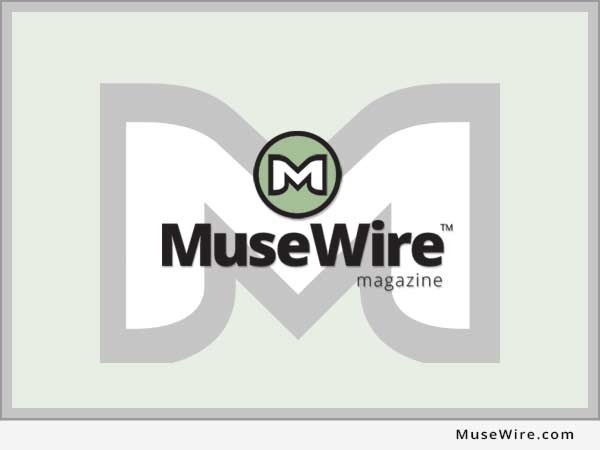 Certainly, it’s not inexpensive, but it’s far more than a keyboard, a PC, some drivers, and a touch panel bolted into a custom case, which is the mis-conception of the “laptops or die” crowd. If you look inside there are numerous custom circuit boards, intelligent engineering in the layout for cooling, it’s quieter than you expect, even with the fans at full speed (I chose to use the NeKo on a 100-degree day in mid August, with 70 percent humidity, and only one fan on in the corner in my home studio, and the XXL got warm, but I was fading from the heat before it was).
Certainly, it’s not inexpensive, but it’s far more than a keyboard, a PC, some drivers, and a touch panel bolted into a custom case, which is the mis-conception of the “laptops or die” crowd. If you look inside there are numerous custom circuit boards, intelligent engineering in the layout for cooling, it’s quieter than you expect, even with the fans at full speed (I chose to use the NeKo on a 100-degree day in mid August, with 70 percent humidity, and only one fan on in the corner in my home studio, and the XXL got warm, but I was fading from the heat before it was).
If you want to replace a wall of hardware with something more elegant, and if you want to retire all the wires between your notebook, audio interface, keyboard controller, etc. with one “all in one box,” look no further than an Open Labs MiKo or NeKo. With the XXL, you have one system that can run all the best Windows-based DAWS with no additional hardware, and the Riff and Bump MP solutions are true value-adds that are remarkable on their own.
To loosely quote Ferris Bueller, “If you have the means, I highly recommend it.”
Summary:
MuseWire rating: FIVE STARS.Open Labs NeKo XXL: SRP(US) $6,899. Dimensions: 46″ (W) X 20″ (D) X 7″ (H), Weight (base configuration) 46 lbs.
More information: http://openlabs.com/nekoxxl-overview.html
Download manual: http://openlabs.com/downloads.html
PROS: Exceptional do-it-all platform with flexible audio I/O based on mature M-Audio Delta hardware. Compatible with all Windows-based applications, including Pro Tools LE (M-Audio Edition) without any other hardware. Great bundle of applications and sound tools to get started. Superb tech support (Platinum level) included which comprises training on the hardware and software. Forever upgradeable as new hardware and software is released (as long as company is in business, of course). Many Gen3 product owners upgraded to Gen4 software. Even my Gen4 TSE can be upgraded to add the Bump MP module for about $700, with all the software (check the sales dept. for “today’s price”).
CONS: Missing some of the wonderful sound sets of prior editions, including the extra Wusikstation expansion packs and E-MU premium sample libraries of the TSE series. No printed manual or user guide other than quick start sheet. (PDF manuals and tutorials are on hard drive, Web site, YouTube, etc.)



Sep 15, 2009 @ 10:25 PM PDT
great review man, looks like you’ve been through quite a few machines over the years. I see the 4k still sitting large in your setup, best mpc in my opinion.
that xxl is huge man…I still like the look of the lx5 better, it’s more sleek. But I love the power you can get with the xxl.
thanks.
(anonymous)
Oct 2, 2009 @ 1:04 PM PDT
I’m surprised there haven’t been more reviews of Open Labs products over the years. Having said that, what I really hoped for was a review of the DBeat. It seems to be essentially the same product without the alpha control or PCI slots and of course more portable and dual core rather than quad core. This review was helpful. No product can be perfect for everyone. But this seems to come close.
Oct 2, 2009 @ 4:46 PM PDT
Hi, Avace,
I’m actually working on a review of the DBeat. The only issue I have, so far, with the DBeat is the external power supply brick, and its short cable (and fact mine power supply was defective); the external power supply is not something you can pick up at local computer store or RadioSHack, so if on tour yours was munched, lost, etc., you would be without power and no alternative. Anybody buying the DBeat should buy a back-up power supply from OpenLabs. I spent an hour on the web trying to find a replacement unit, and couldn’t (!), and I’m a search guru (seriously). The short power cable means you have to hang the power supply on your stand if you use a multi-tier unit (it’s basically an AC cable to a power brick, to a DIN cable to the DBeat). Otherwise, it is esseentially the same as all the other Gen5 products functionally, except you have a nifty back-lit trackball -AND- the touch panel is supposedly multi-touch ready for Windows7 (at least according the the trade show videos… you’d have to confirm that, as I will in the review). Finally, other caveat is that the iPod “cradle” is not really a dock in the same way as some of the cradles out there, meaning it’s basically a sculpted hole in the case with a cable sticking out… so, if you tilt the thing forwardwith your iPod in there, it may fall out since it’s not really a “docking” cradle, as you might find on some table top audio speaker systems, car cradles, etc. From the promos it “looks” like a docking cradle, but the iPod just floats in the opening, and is not “held” in by anything other than the USB iPod cable. So, Velcro might be needed if you are carrying the unit on stage with an iPod already placed for audio playback. Otherwise, the unit is very very very cool. It’s not quite an MPC replacement, as the default settings are setup for RIff and GURU, and some things don’t bahave quite the same way at boot-up as you might expect. Very close, but it’s a bit like the MPC4000 where you have to “program” the Qlinks to actually control filter cutoff or decay of the hi-hat, where on the older MPCs, the slider defaulted to obvious things like decay for controlling hi-hat. But… a full review will follow soon!! Working on review of “TITAN” VST now 🙂
Cheers!
Christopher Simmons
Senior Editor, Music Industry Newswire
ps – say hello to our latest sponsor for Q4-2009, SOUNDSNAP (thanks guys!).
Oct 4, 2009 @ 3:00 PM PDT
Hey Chris.
Thanks for the response. Wasn’t expecting that. I watch O Live when I have the time. And the screen won’t be multi touch. I asked someone at OL and they said they decided not to implement the multi touch screen. Just thought I’d keep you posted. Peace!!
Nov 5, 2010 @ 6:22 PM PDT
im just a few days a head of getting my neko xxl gen 6 and trying to get as much as i can before she arrives and i must say that this is the best review i have read on the xxl thank you so much and i noticed a spelling mistake in your review …. ”The system is pre-set to work with both Live and (Repear”) …lol 😉 cheers mate!
Nov 6, 2010 @ 6:28 PM PDT
enoch – you should enjoy the XXL; great machine. Be aware the USB can get overloaded as ALL the panels and the front headphone jack are all powered by USB power, so it’s not a ports issue but power thing. On mine, it was imperative to use an external powered USB hub (I used a Belkin model) for anything like iLok, syncrosoft, or even something like the KORE controller. You can find many of my long-winded tips still in the Open Labs forum (I no longer participate in the forum there, however). Enjoy!
I’ll repair the repear reaper, too 🙂
Dec 31, 2010 @ 7:56 AM PST
The Neko is a great unit. But with all it has it seems strange that Open Labs chose a PC plat form instead of Mac. No offense to PC users, as I have a PC as well. But I have Mac also and my Mac is more stable and better suited for music applications. Most major studios and producers use Mac. It’s pretty much a standard like Pro Tools. I’m not trying to start that age old debate…Mac vs PC, but the demand for the Neko would have definitely been much higher if it were Mac based. It’s like buying a $300.000 Rolls Royce Bentley and then putting on 4 new tires that came from Auto Zone! It’s odd that Open Labs did that.
Dec 31, 2010 @ 5:44 PM PST
HI Rodney
this is an old debate, I even answered in the Open Labs forum. You may be unaware of this, but Apple doesn’t allow other companies to buy their motherboards, software, or drivers /OSX to use in other electronics. Basically, if it’s not a Mac, you cannot legally use OSX. Open Labs would have been sued for taking apart a Mac Pro, and putting it into the keyboard, and then selling it as a Mac(R) based workstation. They would be sued for mis-use of patents, and trademarks, at the very least. With Windows, anybody can become a system builder as it’s fairly “open” (contributing to company name) … this means, anybody can buy motherboards, drives, various OEM Windows (or Linux) operating system discs with license, video cards, and the like. Further, while it might have been possible to “encapsulate” a Mac Mini inside an Open Labs case, the fact is the original Minis were underpowered, had no PCI/PCIe expansion, and were limited as to video support. Another contributor, is the fact that very few video displays, touchpanels, are supported in the Mac OS, whereas there are many solutions under Windows. This is why OL chose Windows, and they have had great success with this, where they would be out of business with a Mac solution due to Apple shutting them down. This argument has been made by many who don’t understand the fundamental difference in Apple being a closed platform, and Windows being an open platform (which is why you don’t see Dell branded Macs, or Sony branded Macs, right?). Hope that cleared this issue up for you, as well as the many others who continue to make this suggestion year after year, when it’s fundamentally wrong – Open Labs could never have made a Mac-based platform for their keyboards, legally.
Also, if you get an i7 quad or hexacore processor for a Neko, this is basically the same as one of the processors in a dual processor (dual CPU) Mac, or the same a buying a top of the line iMac or MacBook Pro. And so, it’s like having the same “engine” as the Mac, as both Mac and Windows BOTH use the same Intel based processors.